Last Updated on by Lohanna Reis
All you need to know to visit this Micronesian paradise cheaply (including cheap accommodation, transportation, food, etc.)…so you can spend more swimming in the Jellyfish Lake, diving, discovering WWII relics, and exploring the local culture. Palau is hard to get info about — so let us know if you have any questions!
Hi there. So, you want to travel to Palau cheaply, right? Well, here I’ll give you all that you need to know to visit this Micronesian gem the cheapest way possible! But, just so you know, Palau is NOT a cheap place for tourists…. and I think they want to keep it that way. However, while there are some costs that simply can’t be avoided, there are others (which you can read about below) that can be cut significantly.
Note: We divided our time in Palau between 3 of the islands: Koror (home of the largest city), Peleliu (a smaller island to the south famous for its WWII relics) and Babeldaob (the largest island, home of the airport, and connected to Koror by a bridge).
Table of Contents
FEES
Okay, we’ll start the bad stuff that you can’t avoid (but don’t let that scare you off!), Palau may as well be called the land of the fees! It seems like there’s a fee for everything in this country. Just for being there, you’ll have to pay two fees upon departure in the airport: $30.00 for a “green” fee and a $20.00 departure tax. So, just that is $50.00. Besides this, it looks like the fees will increase in October 2016 to a combined $120.00!!!!
If you are going to Palau, you’ll likely want to swim in Jellyfish Lake. Well, there’s another little fee of $100 to visit the Rock Islands where you’ll find Jellyfish Lake (besides the cost of the tours themselves). In other words, if you go to Palau and just do the minimum, that’s already $150.00 in fees.
If you want to explore the WWII artifacts in Peleliu that’ll be another $15.00 “land permit” fee.
And to finish, the country’s most famous waterfall, $10.00.
Despite all of these irritating fees, we still found our trip to Palau to be worth every penny.
ACCOMMODATION
Being an island in the middle of the Pacific, don’t expect to find lots of cheap accommodation…. there isn’t much!
There are many hotels but there is only ONE hostel which at the moment it costs US$ 35.00 per night in a dorm…. that’s Scandinavian country prices! But if you are traveling alone and want to stay somewhere decent, this is your best bet.
There are also a few hotels under US$ 100.00 per night that wouldn’t end up being much more expensive than the hostel if you are traveling in a pair or a group.
In this case, I would recommend Booking.com to find the best options as well as take a look at my page about the sites I use to search for and book accommodation.
Now, if you REALLY want to save on accommodation, the best option is Airbnb. It was here that we found our accommodation both in Koror as well as Peleliu by renting rooms from a place called MAML Divers. To be honest, especially in Koror, the place was downright unpleasant…. calling it “basic” would be a nice way to put it! But I’ll leave the photos here and let you decide if you can handle it. If you’re feeling really adventurous, you can also rent a tent for them and sleep in their front yard for $10.00 per night…. likely the cheapest option on the whole island!
In Peleliu, although the room didn’t have air-conditioning, there was a fan and it was right next to the “port” with decent bathrooms (especially when compared to the place in Koror). So, I’d recommend it. As of March 2016, the room in Koror was $37.00 per night and the room in Peleliu was $19.00 per night. If you’d like to learn more about Airbnb and get a free $25.00 credit towards your reservation, just click here.
While Couchsurfing would be the most economical option, we were unable to find a host.
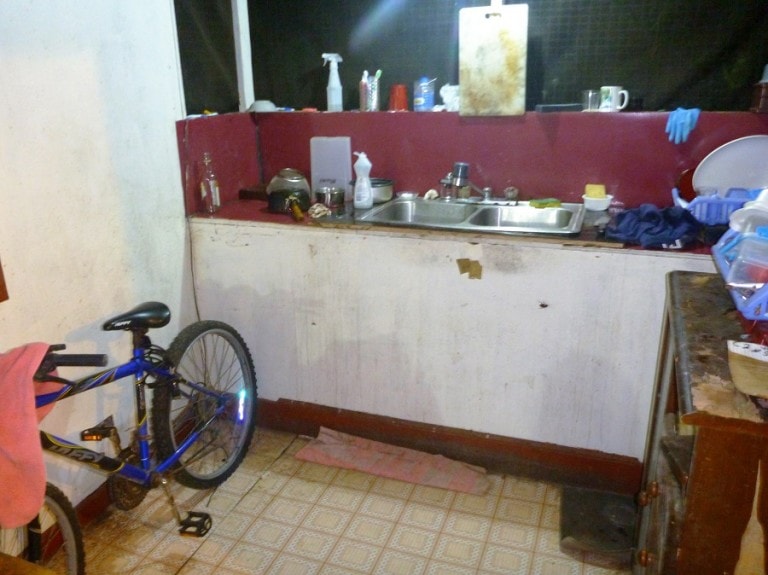
Just ignore the little cockroach on the wall…
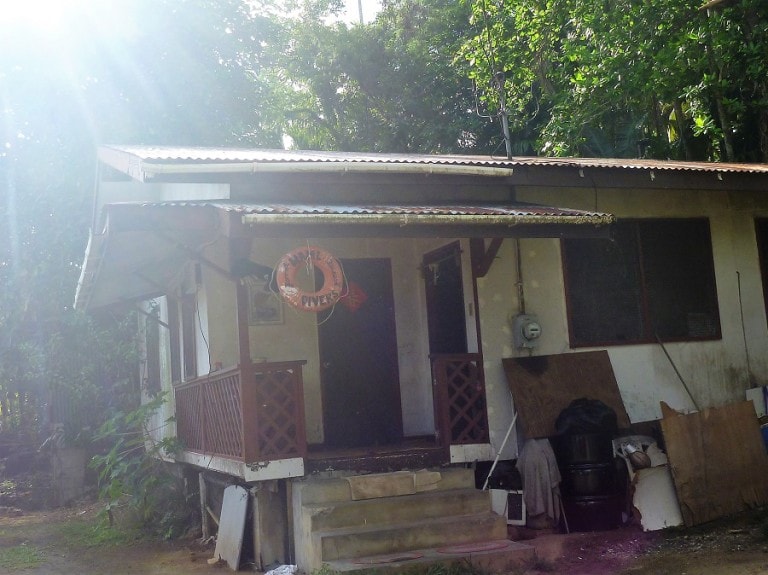
In front of the Airbnb in Koror
TRANSPORTATION
There are a few different ways to save money on transportation in Palau. Here they are:
Flight
Palau isn’t really a cheap place to fly to. You can fly to Palau via Japan, South Korea, Taiwan, the Philippines, or China. But none of these options will be less than $400 besides the cost of getting to these countries. And if you want to buy a flight leaving from Europe, the Americas, Africa or Oceania, it’ll be difficult to find something under 2,000 dollars!
But there’s hope! If you are already in Asia, you can fly to Palau for very few miles! This is possible with several mileage programs. If you read about how I got my flight to Palau in this article, you saw that for just 15,000 miles from the United (Star Alliance) mileage program, I could fly from South Korea to Palau and then from Palau to Lijiang, China for another 15,000 miles…. in other words, for a bargain! With Delta’s (Skyteam) mileage program, it’s 17,500 miles each way.
In summary, if you want to save on your flight to Palau, find a cheap flight to any destination in Eastern Asia and from there use miles to get to Palau.
To help you save on buying your tickets to Asia, you can read our article with 16 tips to save on flights.
Car rental
This is a good idea if you want to avoid the US $15.00 per person taxi fee from the airport to Koror. You can rent the car in the airport and deliver it in the city. And, like us, you can also use it to explore Babeldaob Island as well as Koror. The cheapest option to rent is IA Rental. I asked them and their best price was US$18.00 per day with insurance. It’s just that you’ll have to call beforehand to make your reservation. The phone number is +(680) 488-5011. We tried to email them but had no luck with answers. Just make sure they know what time your flight arrives (because the flights often arrive at very inconvenient times) to make sure that someone is at the stand when you get there or ask what time they open.
In this case, our page with The 5 Best and Cheapest Websites to Compare and Rent Cars Around the World won’t help you much since it’s cheaper to rent a car with the local companies in Palau than online.
Hitchhike
If you are moving around Koror or Peleliu and you want to save, this has got to be one of the easiest countries to hitchhike in. The people are really great and it never took us more than a minute or two to get picked up. In general, they won’t ask for anything, but when we were trying to hitch a ride to the airport, a local family offered to take us in exchange for some “gas money.” So, we gave $10.00 when we arrived at our destination because the ride was about 20 minutes and we had a lot of luggage… still a third of the price of what a taxi would have been for the two of us! But if you are just going close areas around the island, getting free rides is really easy.
Bicycle
Apparently, there’s no longer any place to rent bicycles in Koror but, in Peleliu, it’s a great option to explore the island cheaply if you don’t want to do a tour by car. We paid $10.00 per bicycle per day from Dolphin Bay Resort. A few other resorts rent them as well but this one let us return the bicycles the latest. If you stay with the MAML Airbnb on Peleliu that we mentioned in the accommodation section, you can ask the nice lady who works there to reserve the bicycles and drive you there (it’s a long walk). Then, you can just hitchhike back to your accommodation after dropping off the bicycles. Just keep in mind: Peleliu is hot and humid so you have to be in the shape necessary to cover the 13 square kilometers (5 square miles) of the island.
Government boats
This is the cheapest way to move between the islands of Koror, Peleliu, Angaur, and Kayangel alongside some beautiful views! I talk all about these boats along with the schedule, days of operation, and prices on this page.
Private boats
You can also use private boats from dive shops to travel between the islands (as they are often going that way anyway), though they will be more expensive than the official state boats… however, sometimes they are quicker and have better schedules. If you’re interested, talk directly with the diving centers. If you are staying with the MAML Divers Airbnb in either Koror or Peleliu, you can talk to them.
To read more tips about saving money on local transportation during your trips, take a look at our page here.
TOURS/ATTRACTIONS
These are something worth spending money on in Palau! Palau is an incredible place and it wouldn’t make any sense at all to miss out on the main attractions just to save some money.
The first and most unique is the Jellyfish Lake. This magic place lets you swim surrounded by thousands of sting-less jellyfish. After much research, the best option that I found was the package for a day from Impac Tours. The tour we did specifically with them was called the Jellyfish Lake and Rock Island Kayaking Tour. For this tour, you’ll pay US$100 for the tour (plus $100 for the government permit) and the day will include a visit to the Milky Way to bathe in medicinal clay, kayaking around the Rock Islands, a stop on an island for lunch, a visit to Jellyfish Lake, and one last snorkeling among a coral reef. In other words, an incredible day that alone would make your visit to Palau worth it.
Well, for this price don’t expect exclusivity. The groups on Impac tours are not small but the places you’ll go are so awesome that you can forget about the crowds.
If you’re into diving, Palau can’t be missed. Unsurprisingly, it’s not a cheap place to dive. To have an idea, a day of diving with 2 tanks is about 160 dollars besides the rental equipment. So be prepared to shop around for prices in dive shops as well as to see where they’ll be diving for the dates you want to go.
If you want to dive, don’t forget to buy a travel insurance that covers diving. A good option is WorldNomads that includes several adventurous activities as well as diving up to 50 meters for a good price. To know more about other options for travel insurance, take a look at our special page about the 3 best and cheapest travel insurances.
Finally, for those interested in the Battle of Peleliu, one of the bloodiest WWII battles of the Pacific, you’ll find plenty to do. If you are really into WWII history, I recommend you find a local guide to take you around the jungle to hear the stories and find the places with tanks, cannons, machine guns, planes (the Japanese Zeroes) and lots of bunkers…. all abandoned! Plus, you’ll have all of the caves as well as the museum (though you’ll need to have the $15.00 government land permit if you want to visit it).
Unfortunately, there weren’t enough tourists to do a tour so we rented bicycles and explored on our own. If you want to find out how to do the same, soon we’ll be posting an article explaining everything including a detailed map… so keep an eye out!
The island is quite nice so it’s worth spending a few days if you can. If you’re short on time but really want to see the island, you also have the option of doing a fairly expensive day tour to Peleliu leaving from Koror.
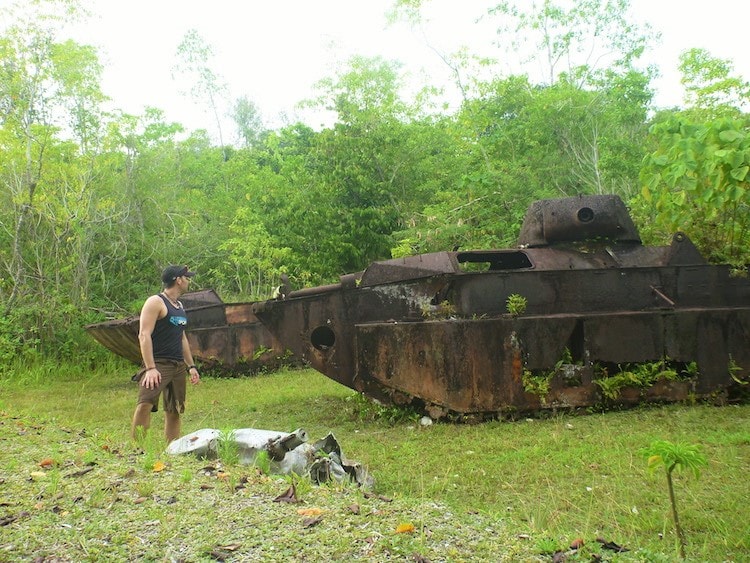
Leftover Armed Personnel Carriers from the WWII Battle of Peleliu, Palau
FOOD
We have good news here! It’s actually quite easy to save on food in Koror. It’s really not that expensive to eat in local restaurants (even the ones in downtown Koror) or buy things in the supermarket. You also have the option of “Bento Boxes” which are fresh (prepared on the morning of) and tasty pre-packaged meals that you can find at any gas station.
The prices of the supermarkets are slightly higher than that of the United States but are nothing crazy.
In the restaurants that we ate in, you can eat quite well for 5-6 dollars. And those “Bento Boxes” (aka our best friends) were around 2-3 dollars.
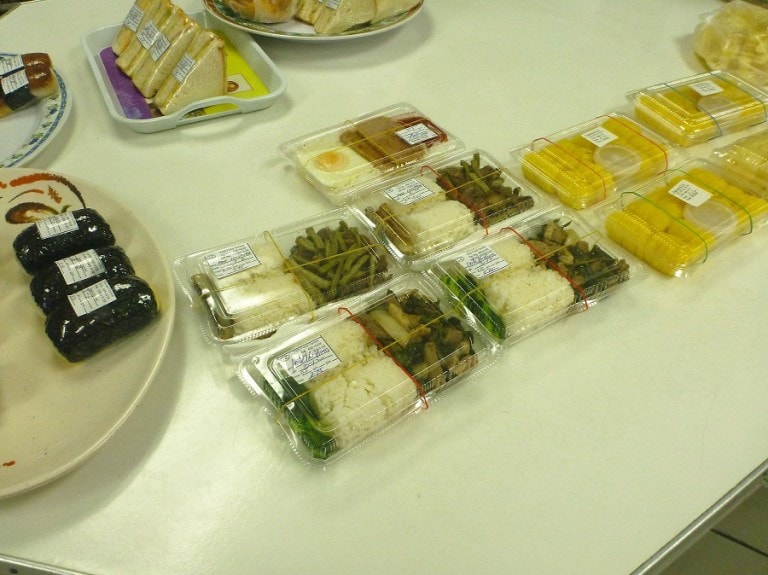
The famous Bento Boxes in Koror, Palau
Unfortunately, in Peleliu, things are much more limited. There are basically no local restaurants outside of the resorts and there’s not much selection in the stores. The best idea would be to bring lots of food with you from Koror.
One more note…. the tap water in Palau is not drinkable so you’ll have to buy your own from the supermarket.
If you want to learn more about how to save on food and drink while traveling, this article will give you some ideas.
Well, that’s it. Hopefully, this article will help you explore this unique little country without going bankrupt.
And stay tuned! As we mentioned above, we’ll be adding more articles about Palau soon. One will about Palau’s main attractions that you shouldn’t miss while there and the other will be about how to explore the WWII relics and abandoned weaponry that was left behind on Peleliu island, including a map and an explanation of how to find them!
UPDATE: As promised, we have now added our article about 8 Reasons to Visit Palau, so don’t miss out!
Tours, activities and excursions in Palau
To search for tours and tours in Palau, I recommend taking a look at GetYourGuide and Viator. These sites constantly advertise some promotion, in addition they have a very nice variety of activities.
If you have any questions or comments about what was covered above or anything else related to Palau not mentioned, just use the comments area below and we’ll respond as soon as possible.
Happy travels!
Planning your next trip?

Already reserved your hotel or hostel? If not, our article with The 6 Best and Cheapest Websites to Find & Reserve Accommodation can help you out. You’ll also find some promotions and discount codes.
Still haven’t booked your plane ticket and want to save big? Take a look at our page with 16 Tips to Save on Flights where you’ll also find the 4 best websites to buy your plane tickets.
And finally, will you need to rent a car during your trip? Then surely our page with The 5 Best and Cheapest Websites to Compare and Rent Cars Around the World will help you choose the best rental car and find a good deal.

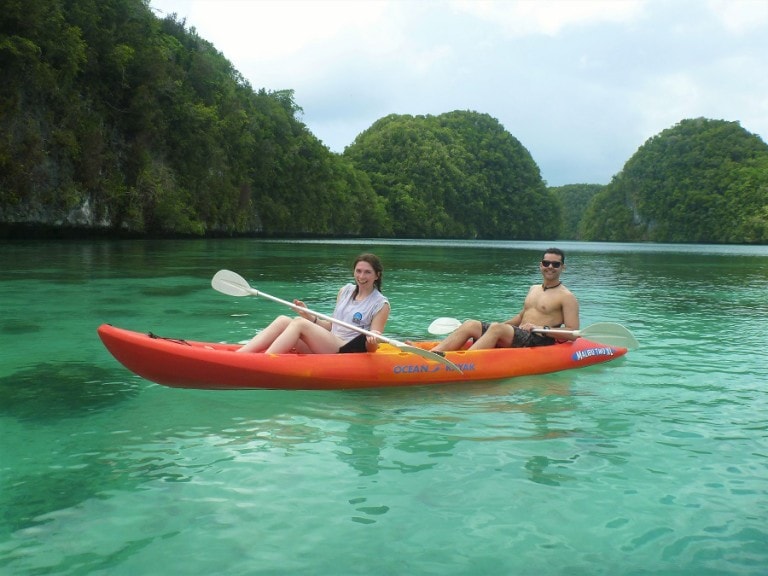
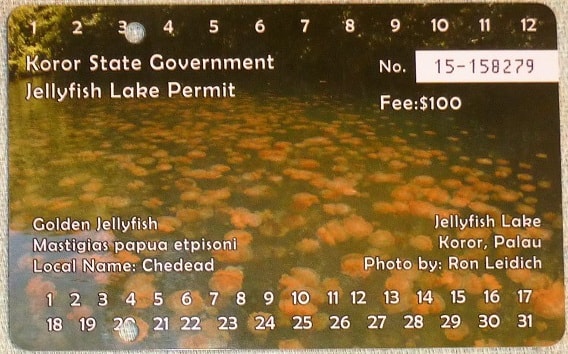
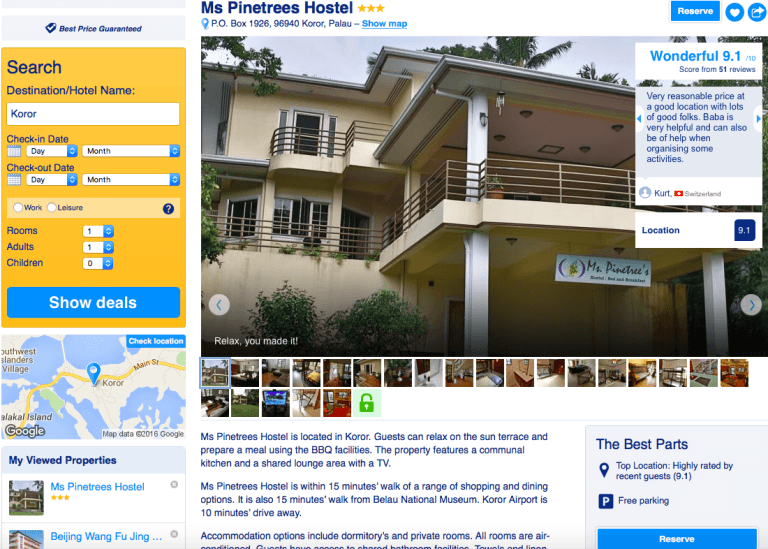
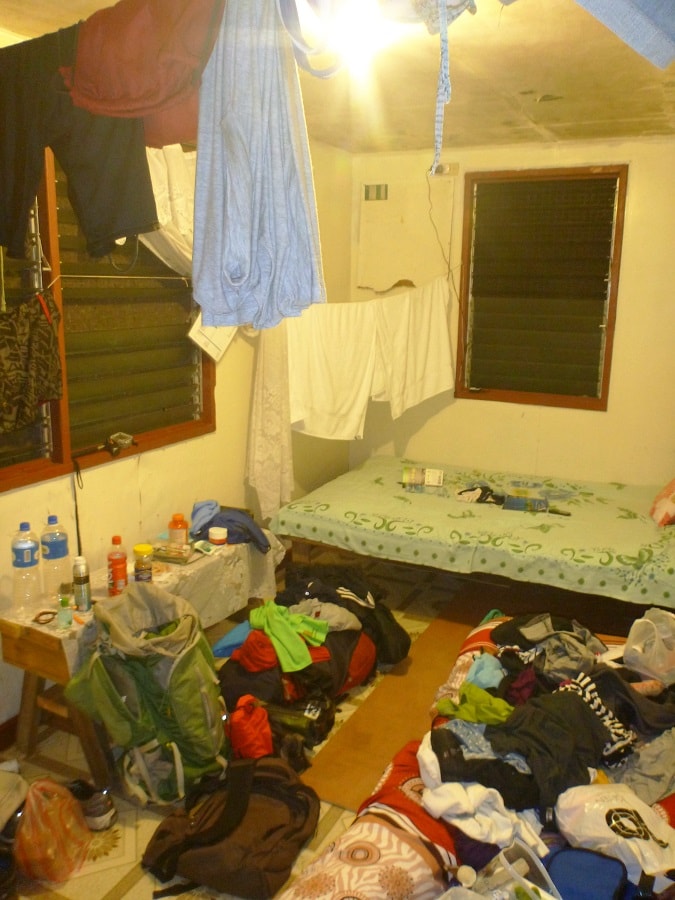
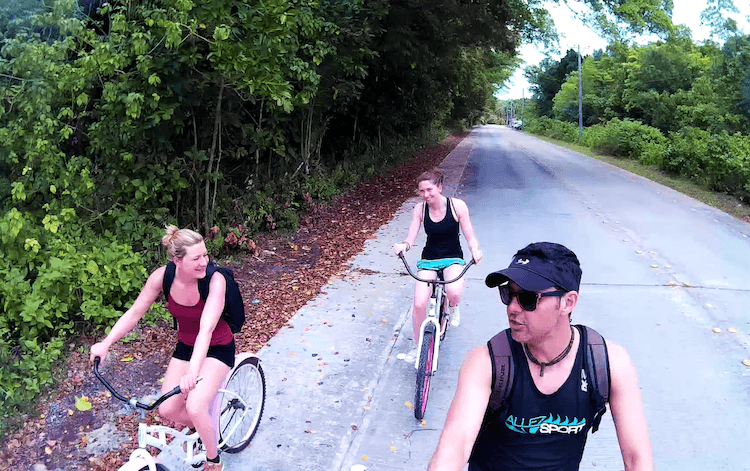
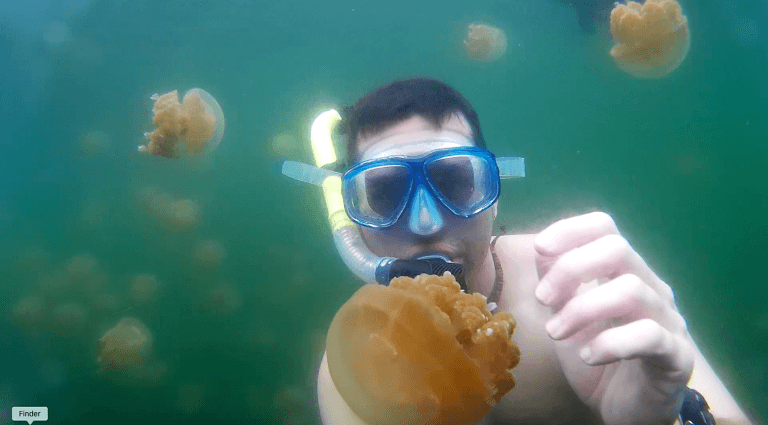
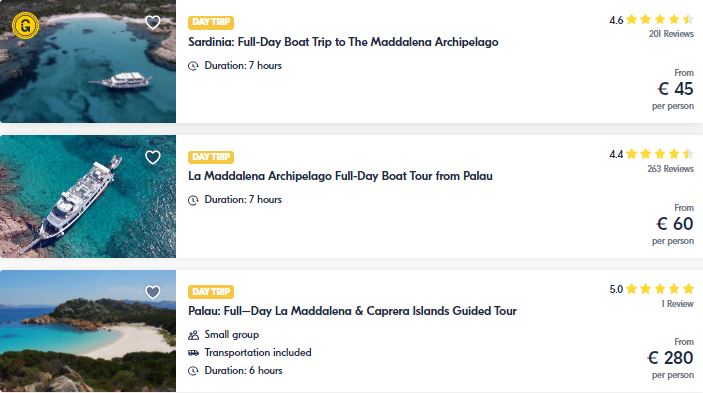
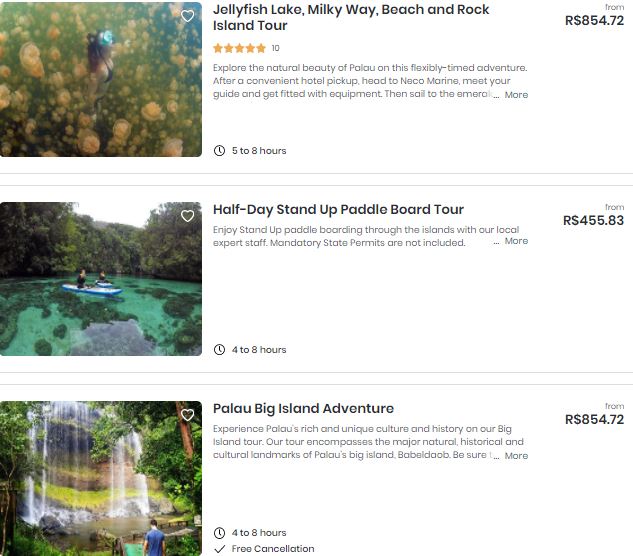



 8LvG4w56H8xI6oS3MDSK2mZ1enEH_ABlpTx5jAsYdFQ
8LvG4w56H8xI6oS3MDSK2mZ1enEH_ABlpTx5jAsYdFQ
Free diving is much cheaper (MAML takes 60$ pP for a whole day boot trip). Next to the small islands of Ngeruktabel (at best reached by kayaking, check paddlingpalau.net) you will learn why this place is called the ‘Serengeti of the Sea’. But the big fishes at the famous spots like Blue Corner are out of reach even for those who can go below 20m because of very strong currents.
Hi Heiko,
Thank you so much for the tip… I hope more people will follow your lead and give us more ideas!
Just to clarify, you’re saying to do free diving on your own by kayaking instead of going with a dive company like MAML? We didn’t think of trying that, but it certainly would be cheaper.
All the best and thanks again!
Free diving isn’t for everyone. I have to say your suggestion is not very good, sorry. And like you said the best dive sites are thus not reachable so what is the point? Saving money on diving can be done by bring some of your own gear. Rentals become expensive over time. Gets annoying if you do a long trip if not much diving involved I suppose.
Palau is expensive. All of those Islands are (Guam, Saipan, Micronesia), I also stayed at a cheap hotel for my last night because I was flying out late and didn’t want to pay the extra night at a resort.
Food at the supermarket are really decent prices. The restaurants aren’t always expensive but after spending so much on activities and fees huh. $160 for departure tax?
And I heard they want to limit the Chinese tourists from coming because they destroy the environment with wreckless scuba diving. I think $160 might just do that…and take other tourists along. “Hidden” fees like that are scum. We were shocked it is $50… most countries include it in the ticket but then the tickets would be even more expensive and nobody would come…pff
Hi again Richman! Thanks for leaving us another comment.
Well, to be honest, I don’t know how to dive so I really can’t say much about either diving or free diving 🙂 I guess it could be a thing of personal preference and what you are comfortable with.
No, unfortunately Palau is never going to be as cheap as SE Asia or South America. We tried to visit it the cheapest we could (while not sacrificing too much on activities) but it still wasn’t one of the cheapest destinations we’ve visited. Not by a long shot. We still found the price to be completely worth the experience, though.
We were also pleasantly surprised by the food prices. Like I said, our favorite were the bento boxes from the convenience stores. We did a bit of cooking at our Airbnb (eggs, pasta, etc.) although, honestly, the place was so disgusting we didn’t really want to have anything to do with the kitchen.
Yes, the fees really are ridiculous. I guess the hope with that is to limit certain types of tourists (such as ones like us “backpackers”) and thus only attract the “elite” ones with the big bucks…. as well as prevent overcrowding (like you were saying). We’ll just have to see how that affects their tourism. I’ve heard other people say that this could be the future of tourism in small countries that can’t sustain large numbers of visitors and really only want ones who will spend a lot of money. I guess you could look at Bhutan’s $250 daily fee minimum as an example.
Could you say something about camping on Palau, please? Is possible to pitch own tent, make an open fire, use any source to wash? Did you see any campings or tents on savage beaches or in a jungle. Is it save anyway? And last but not least, is possible to do it for free or I have to pay as for everything on Palau? ? I would be appreciate for any info. By the way, thank you for many worth information, great job!
Hi there!
Thanks for the comment; that was a good question. To be honest, we didn’t do any camping nor did we see anyone else camping. I’ve heard that many people camp somewhere in the Rock Islands (usually getting there via boat/kayak). I don’t believe you need to pay anything extra to camp there and I think you can basically choose any island you want, but you do need to pay $100 for a Rock Island Permit. This permit, however, also covers Jellyfish Lake (which I assume you would be going to) so it’s probably something you would be getting anyways.
I’m not really sure about camping on the other islands/areas like Koror and Peleliu. There’s not that much control so you’d probably be fine setting up camp anywhere, but, as I didn’t try it myself, I’m not 100% sure. Saying that, Palau did actually feel very safe and the locals are very helpful/friendly so I doubt they would mind. I would imagine the only fees you would have to pay are the permits (such as the Rock Island one) for various islands. You would need to pay these fees anyways just to step foot on the islands, so I don’t think you would need extra to camp.
In the case of Koror, if you would feel more comfortable having a designated place to camp, I think some of the Airbnb options (especially from MAML Divers like we mentioned in the article) have tent options.
If you have more questions about camping in specific places, I’d really recommend you contact the Palau Visitor’s Center. We found them to be super helpful and gave us lots of good info. They have an office in downtown Koror that is worth stopping into. Otherwise, you can contact them beforehand via the phone number or email here:
If you have any other Palau or travel-related questions, please don’t hesitate to contact us again! Otherwise, enjoy your trip to Palau…. it really is an incredible place 🙂
Nikki
Thanks for this great blogpost! I’ve also been to Palau in the last year and a it was amazing! We have seen must of the sights mentioned in your text an had a really great time! However, we were late booking a hotel, and i’ve to admit that the prices for hotels (and food, etc) are expensive. Now, to find a decent hotel for a good prices was kinda hard (https://palauvisitors.com would have helped me a lot). Plus, there are no public beaches in Koror except for a few hotels with exclusive beaches. Nevertheless, the nature and the people are great and it was an unique adventure to discover Palau!
Hi Simon, thank you so much for the comment and compliment. We really appreciate it.
You are right, Palau is indeed amazing…besides some of the steep prices. We will keep this website here to help out other travelers.
All the best!
Fees as of Sept./Oct. 2017
Departure tax: $50
Rock Islands: $50
(Not including Jellyfish Lake – but as there are no more jellyfish there you most likely don’t want to visit anyway.)
Kayangel: $8 “sightseeing/tourist” fee – conservation area: $15 + $8 for snorkelling
Babeldoab Island:
Well, officially you are supposed to pay for everything and visit the relevant state office before you do any sightseeing – a rather costly (and time consuming) undertaking given that there are 10 states with lots of sights on Babeldoab.
In practice, payment is enforced at these 5 sights, only:
Airai: Japanese WWII communications centre + bai – a whopping $25! (Pay to the ranger on site.)
If you think that outrageous (like I did): visit in the morning/evening time when there is nobody around to charge/fine you.
Ngarchelong: Badrulchau monoliths $5 (Ticket booth.)
(Another site in Ngarchelong where you are supposed to pay is the Japanese light house but the road is reportedly closed at the moment.)
Ngardmau: Waterfall + Japanese loco $10 (Ticket booth.)
Aimeliik: Bai (Visitor Centre). Didn’t stop as I’ve already seen the other 3 bais therefore don’t know the price.
Furthermore, at the mediocre sights along the main road in Ngatpang state (WWII memorial, Japanese radio station, traditional village) there are signs saying that in order to visit you have to obtain a permit ($5) from the state office – inconveniently located at the end of a dirt road (though being upgraded right now) leading over to the west coast.
In all the other states I didn’t notice any signs regarding sightseeing fees.
Peleliu:
A real nuisance – basically you have to pay for everything you do – although cycling is still free (at least for now):
Land tour (WWII relics) $15
Diving: $30
Snorkelling: $10
Kayaking: $10
etc.
Angaur:
Nobody ever asked me for any payment nor did I see any signs up therefore I assume no fees are charged on Angaur (just like Koror).
Once again, thank you so much for all this great info, Bjorn! Things like this can change pretty quickly, so it’s also really helpful to have someone on the ground to get some updated info.
When I get some time later this week, I’ll be sure to add in some of your new info to the article above 🙂
Also, you made it to Angaur? Oh, we tried so hard to get there! How’d you manage to get there? What was it like/ did you think it was it worth going to?
Thanks again, Bjorn!
-Nikki
Yes, I made it to Angaur. Will post all the relevant “how-to”-information (also for the other islands) soon so that you can work them into the main articles.
Seriously, Bjorn, thank you so much…..Rodrigo and I are really appreciating all the info you’ve given us! Especially since Palau can be a difficult place to get info about. You may just be one of our favorite readers because of how much you’ve helped us 😉
Hope you had a great new years’ and looking forward to reading your “how to”!
I totally agree that getting information about travelling around Palau is ridiculously difficult given how important tourism is for the country. On the other hand it is certainly laudable that they want to prevent themselves from making the same mistakes that have ruined other places taken over by mass tourism.
Hi there, I am also trying to organisme our trip to Palau this August. So hard to find any information so thanks a lot for your info. One question: what does government payday week means? We want to spend two nights in Kayangel… finding really hard to get any info. Thanks in advance,
Hey Mira,
Glad we could help! I know we had a really hard time finding info before we went as well.
To answer your first question, it looks like government payday weeks are every other week (here’s the 2018 pay schedule so you can see what days/weeks those are: https://palaugov.pw/wp-content/uploads/2017/12/Pay-Period-schedule-2018.pdf). The ferries to Kayangel and Angaur only run during government payday weeks, so they only run every other week. There’s also an extra ferry to Peleliu on Wednesdays during government payday weeks.
Honestly, the ferry schedules vary so much that the best thing you can do is contact the either the tourism board by email or phone (get the contact info here: https://www.pristineparadisepalau.com/contact-us) or the state offices (+680 488-1817 or +680 345-2967)) to confirm when the boats are running.
We usually make international calls with Skype since it’s pretty cheap (read more about it here if you don’t already use it: https://outofyourcomfortzone.net/how-to-call-home/), so that’d probably be the best way to call any of those phone #s.
If you’re looking for more info about visiting Kayangel, I highly recommend you check out Bjorn’s comment at the bottom of our article here: https://outofyourcomfortzone.net/8-reasons-to-visit-palau/
We didn’t personally visit Kayangel, but Bjorn did and was nice enough to write us a big comment about his experience. Hopefully, it’ll give you some more info.
Sorry, that ended up being kind of a long message….so, let me know if you have any questions or if anything wasn’t clear!
Hello Mira,
let me know if you have any questions on Kayangel and I will try to answer them to the best of my knowledge.
thanks for sharing this info.
No worries! My pleasure to help! 🙂 I loved the place!
[…] you are traveling solo for the entirety of your trip. Assignment Assistance UK gives you a handy guide on what to carry for a solo […]